Dogs and Cats Suffer, Die at Liberty Research
Inside a cluster of nondescript, windowless buildings in central New York:
- Dogs were injected with insecticides.
- Other dogs had holes drilled into their heads so that a deadly virus could be injected directly into their brains.
- Cats suffocated under flipped-over litterboxes.
- Other cats, locked away in severely crowded rooms, grew thin, apparently unable to compete for food.
- Cats with painful injuries were only given a single dose of pain relief at best.
- The process of putting animals out of their misery was horribly botched.

These shameful scenes, revealed in a PETA eyewitness investigation, were business as usual at Liberty Research, Inc. (Liberty), a multimillion-dollar contract testing laboratory and dog and cat breeding company whose workers tormented animals, engaged in bad science, cut corners to increase profits, and fostered a pervasive culture of animal neglect.
Based on PETA’s evidence, the U.S. Department of Agriculture (USDA) cited Liberty for violating nine federal regulations. New York State officials cited the company for three violations of state law and denied Liberty’s application to renew its required approval to use live animals in experiments, leaving the laboratory without the necessary approval to experiment on animals for more than three months.
Liberty uses hundreds of dogs and cats each year in cruel tests—many of them for veterinary drugs—that it carries out for pharmaceutical giants such as Bayer, Novartis, and Merck. Liberty also breeds and sells thousands of dogs and cats to be used in experiments by companies such as Merial, government agencies such as the Department of Veterans Affairs and the USDA, and schools such as Michigan State University and the universities of Pittsburgh, Florida, and Louisville.
When companies are planning to hire Liberty to carry out tests on dogs and cats, their representatives frequently tour the facility. Often, they even participate in the experiments. They have the chance to see the substandard housing, the animals’ distress, and the carelessness of the employees—and they can also check federal inspection reports on the facility.
Yet they still hire Liberty.
Moaning in Pain
In one experiment, workers used a drill to bore holes into the skulls of 30 young beagles so that distemper virus could be injected directly into their brains.
Some dogs blinked and even whimpered during the painful procedure, indicating that they were not adequately anesthetized. They woke up moaning. Likely in pain, some hit their heads on cage walls, causing blood to spurt from their wounds.
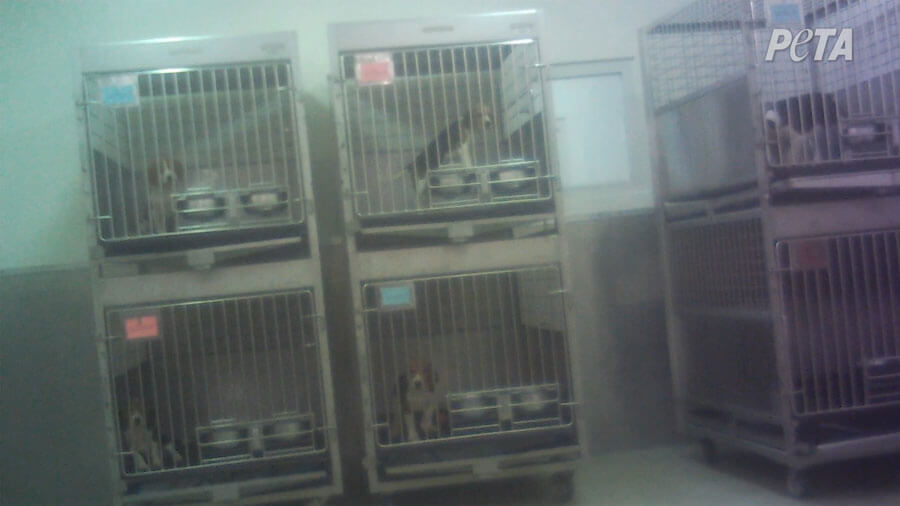

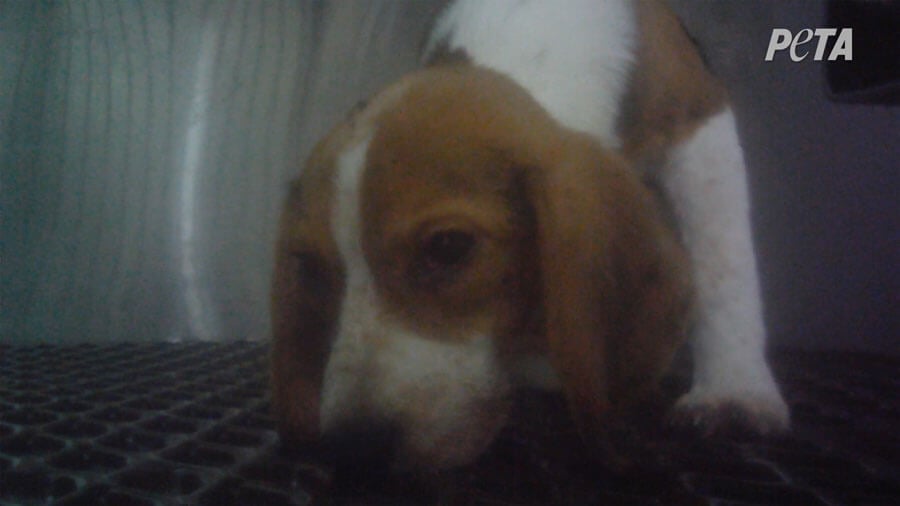
Following this barbaric procedure, a senior worker reported seeing one dog walking in circles while another repeatedly banged her head on the cage floor. In the following days, several dogs became lethargic, appeared depressed, and stopped eating. Some dogs foamed at the mouth, and others had seizures. They were left to suffer from their symptoms without any apparent treatment and killed at the end of the study.
In addition to the blatant suffering that it caused, this experiment was also scientifically pointless. Not only is there a distemper vaccine that has been in use for decades to prevent the disease, dogs are infected with virus through inhalation—not through the brain. When the distemper virus was injected into dogs’ brains, their bodies were attacked through a process entirely different from inhalation.
Any data obtained from the experiment would be useless.
Suffocated, Crushed, and Bred to Exhaustion
Cats at Liberty were kept in barren, windowless pens in unnatural conditions that held nothing of interest to them.
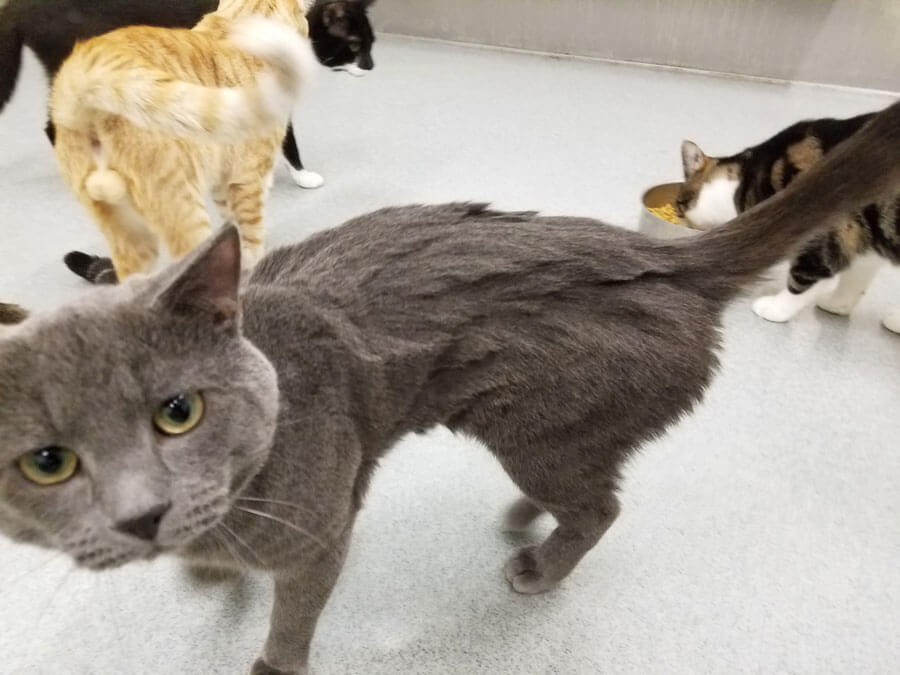
Some pens were so severely crowded that they looked more like they were in a hoarding facility than in a well-funded, regulated laboratory with ties to pharmaceutical industry giants and numerous universities. Some cats in these pens were evidently unable to get enough food and became very thin. Despite that, they were not moved to other pens, and little concern was shown for their well-being.

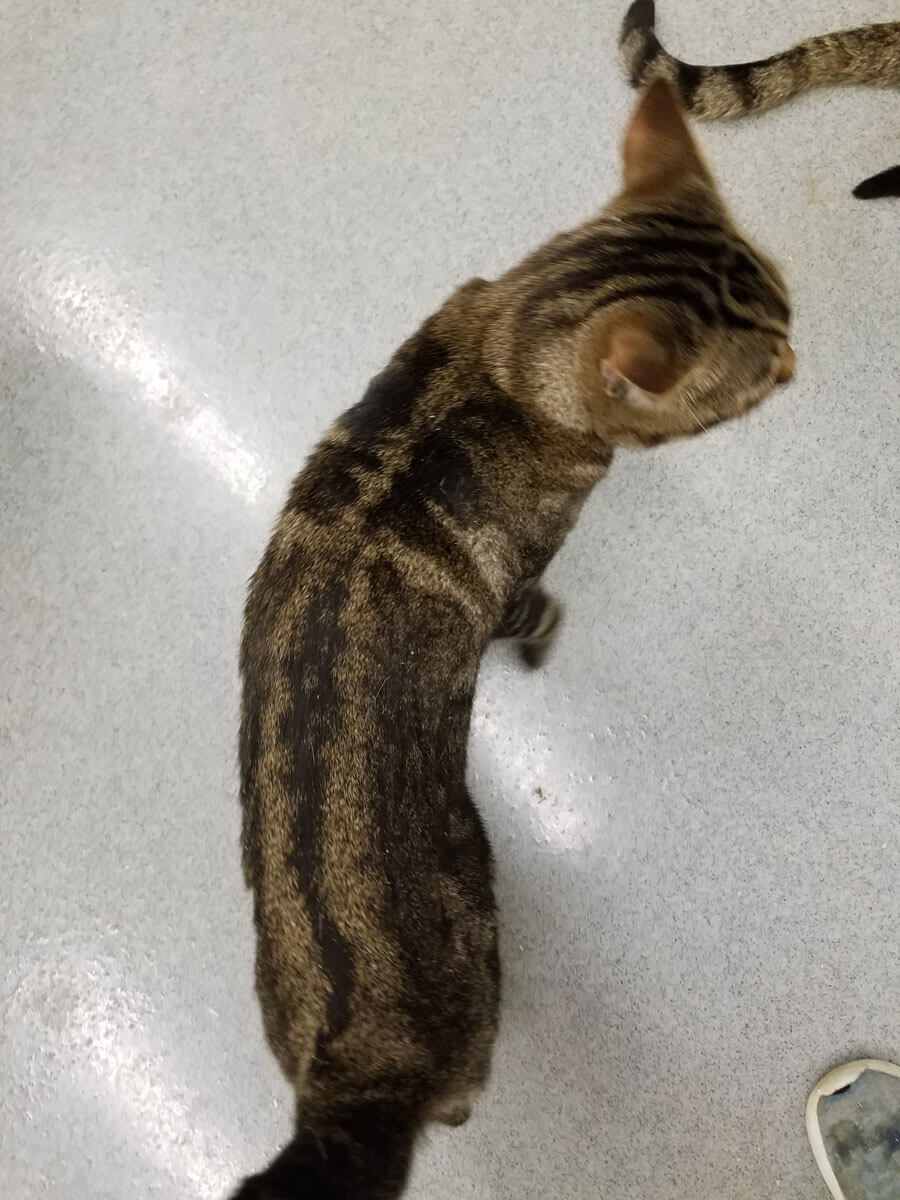
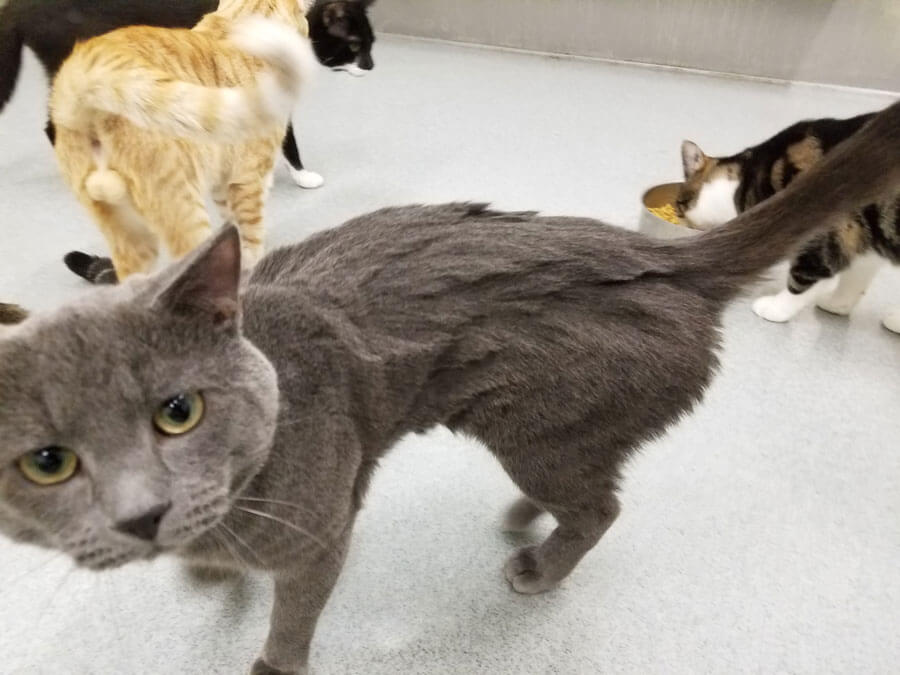
A supervisor described the miserable lives of cats used in Liberty’s breeding compound, explaining that on the same day when a mother cat’s kittens are taken away from her forever and then tattooed—their initiation into a life of deprivation and pain—she is placed back in breeding. The supervisor said:
“[T]here’s never any break for her. … There’re a lot of problems with them [giving birth] because they’re underweight, but it’s masked because they’re pregnant, and then they go downhill while they’re nursing because they can’t keep up with the demand.”
Two workers said they found cats “suffocated” under flipped-over litterboxes. The USDA actually cited Liberty in March 2016 for allowing kittens to die in a similar fashion. One worker described an incident in which a resting board had flipped and “crushed” a cat to death.
Slow and Painful Death
A cat identified as “JAD4,” named Jade by PETA’s eyewitness, had seizures for nearly a month. These episodes left him briefly paralyzed. He was once seen on his side with all four legs twitching; at other times, his back legs were splayed out behind him and he dragged himself forward with his front legs. However, nothing was done for him during this time. When the decision was finally made to euthanize him, a veterinarian simply advised the workers to check to see if there was any need for Jade’s “body parts.”
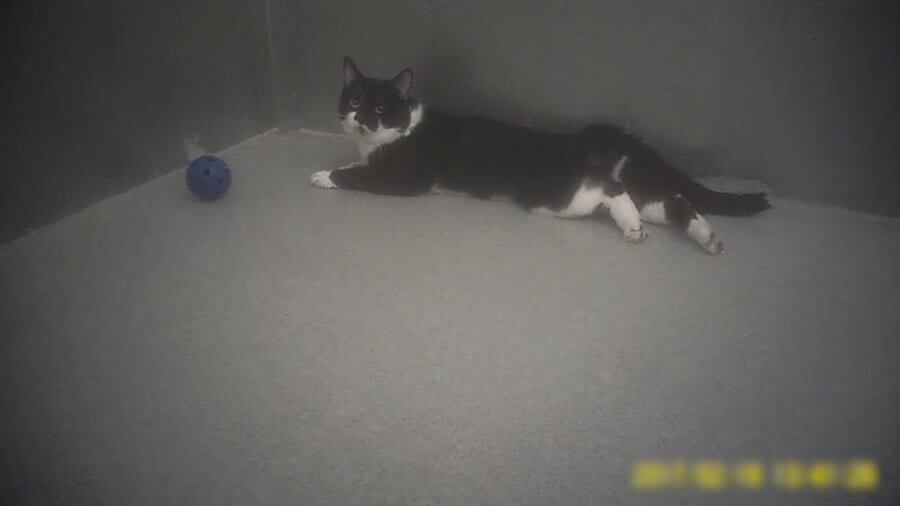
Death for Jade was slow and painful. A worker repeatedly tried to sedate him by injecting him in the hind leg as he struggled in another worker’s arms. Eventually, he was left to stumble and fall to the floor among other cats. Finally, a worker gave him a lethal injection in the heart, but when the needle was inserted into his chest, he jerked his head, indicating that he might have been conscious and experiencing pain. Another worker admitted that she had injected animals in the heart who were “less sedate than they could be.” She said, “I’ve had them where [their upper bodies were] lifting up and I was still able to” kill them this way.
When Liberty needed to make room for an upcoming experiment, workers got rid of some unwanted laboratory “equipment.” In this case, that meant putting down some beagles. For one dog, the process took more than seven minutes while she was fully conscious and gasping. One worker restrained her while another struggled to keep the needle in one of her veins. With a dead dog in full view on the floor nearby, blood flowed as the worker blew out her vein. Finally, on the fourth try, she was killed.
Archaic Testing Procedures
Liberty performs archaic, cruel experiments on animals, despite the existence of well-established, alternative methods that do not use animals in laboratories.
In an experiment that Liberty carried out for a pharmaceutical company, young dogs were injected with megadoses of an opioid and subjected to multiple blood draws. They became lethargic and depressed, refusing to eat. They were made to suffer even though microdosing, computational methods, and cell-based methods could instead have been used.
In experiments funded by another company, workers injected an insecticide into dogs to evaluate their tolerance to it, although a synthetic skin could have been used instead.

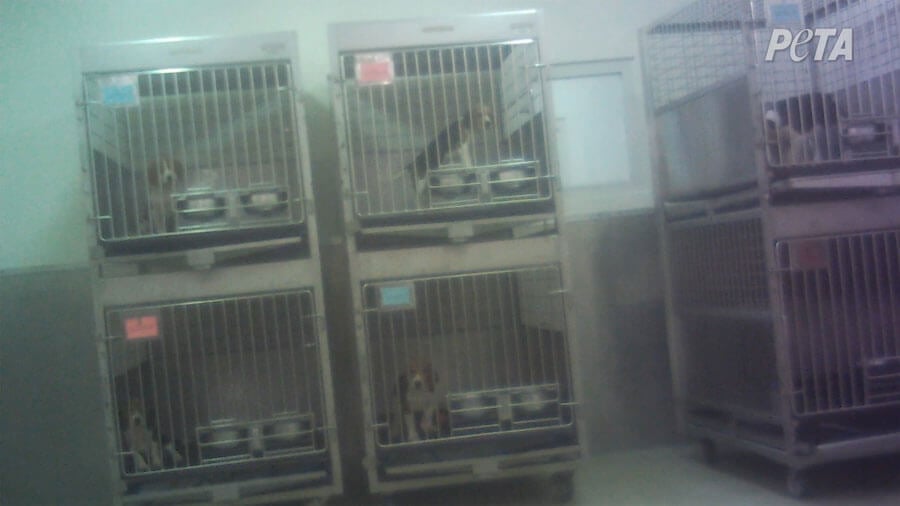
Laughing at Painful Injuries
At Liberty, incompatible animals were frequently caged together. A dog, called Hank by PETA’s eyewitness, was bitten by another dog—but a senior worker dismissed the need to treat the wound. Even though the dog was clearly unable to bear weight on one of his front legs, the worker said, “I’m not going to do anything for it … I’ll come back in a week to see if it’s cleared.”
The same worker said she waited until one dog had bitten another dog three times before separating them. Two dogs workers named Lumpyhead and Shitter fought frequently but were not separated. One worker laughed as she said that even though another dog “got injured” by a cagemate, the dogs were separated only “when the fighting continued.”
A worker said another dog repeatedly cut her tongue on a cage, leaving blood-stained workers looking like “fucking butchers.” After Liberty was finished with her, she was “butchered.”
A cat PETA’s eyewitness named Neville was kept caged with other cats who repeatedly attacked him, leaving his nose lacerated and scabby for more than five months. When a worker was asked if the lacerations should be reported, she replied, “No. It’s just from them fighting.”
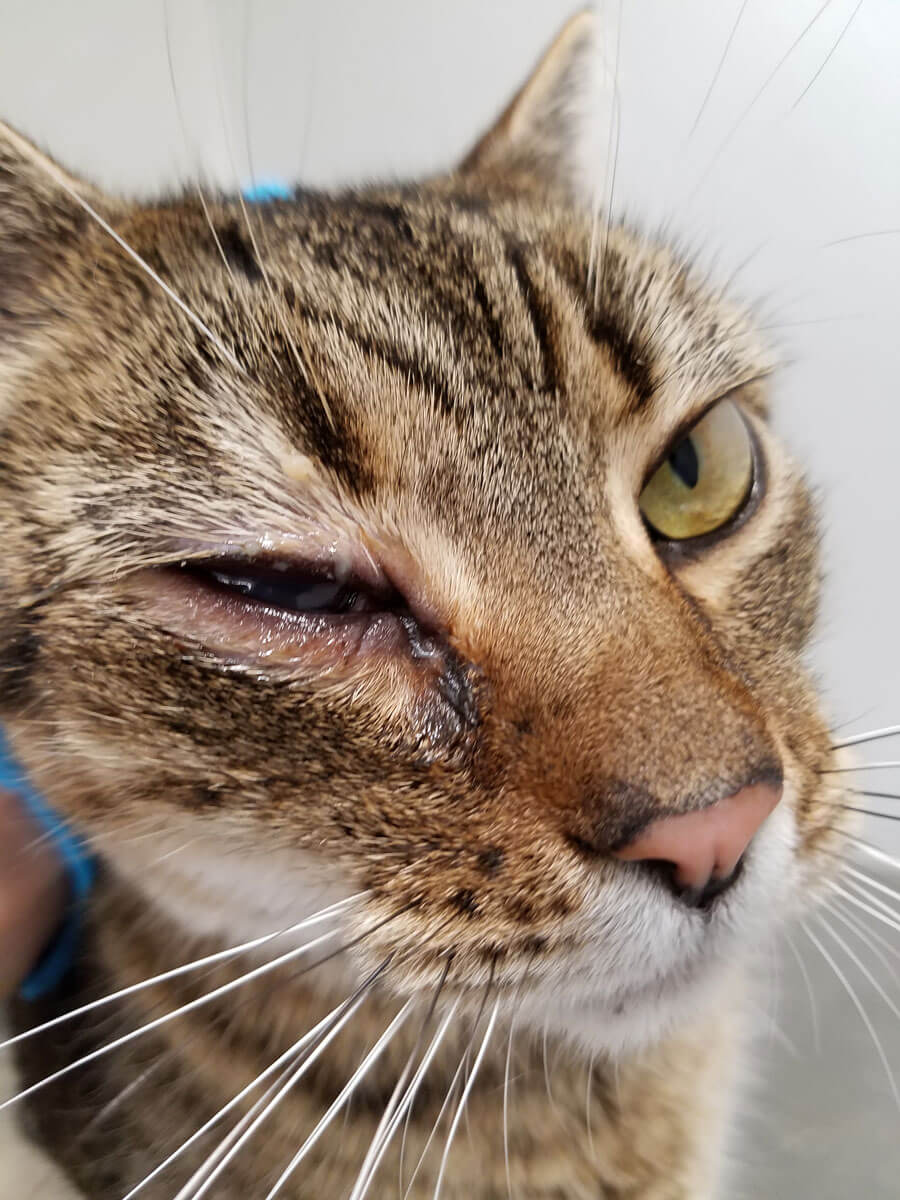

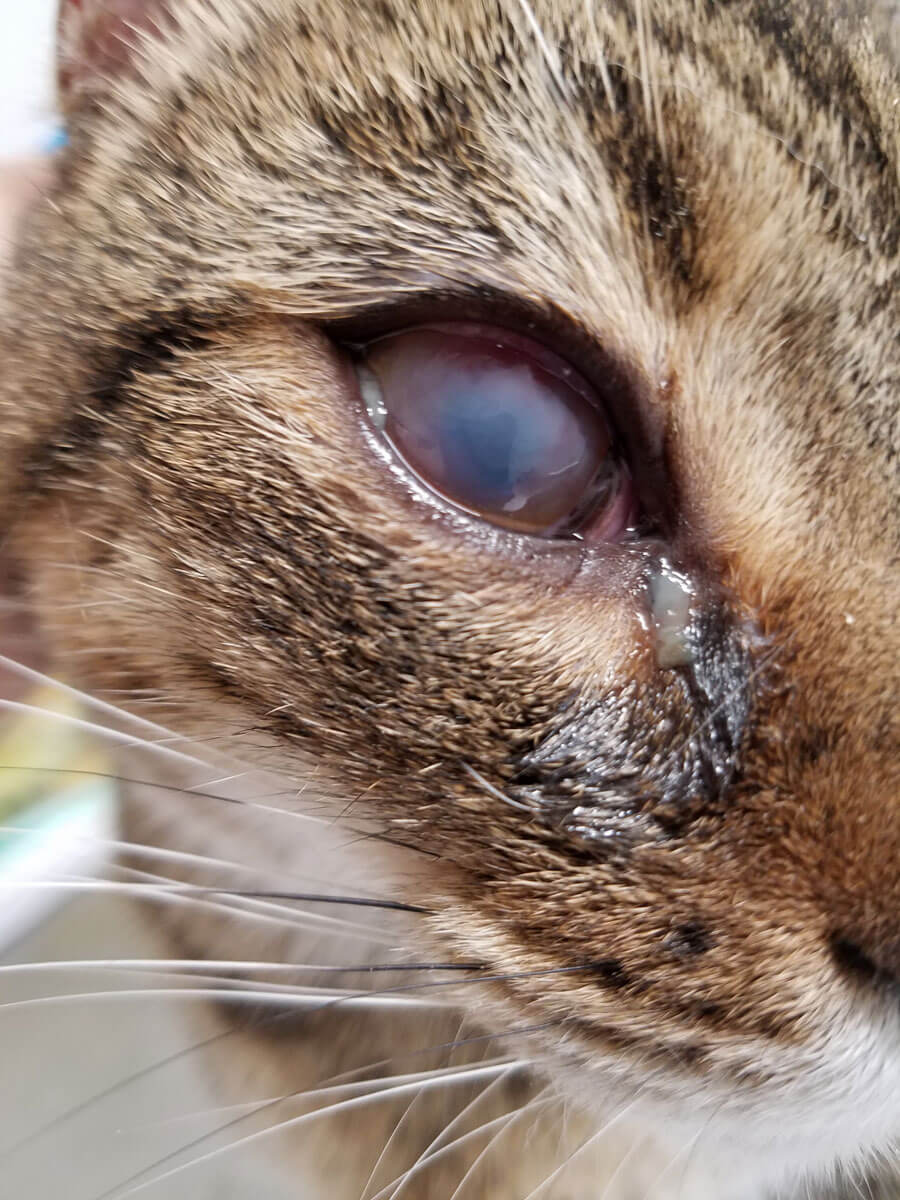
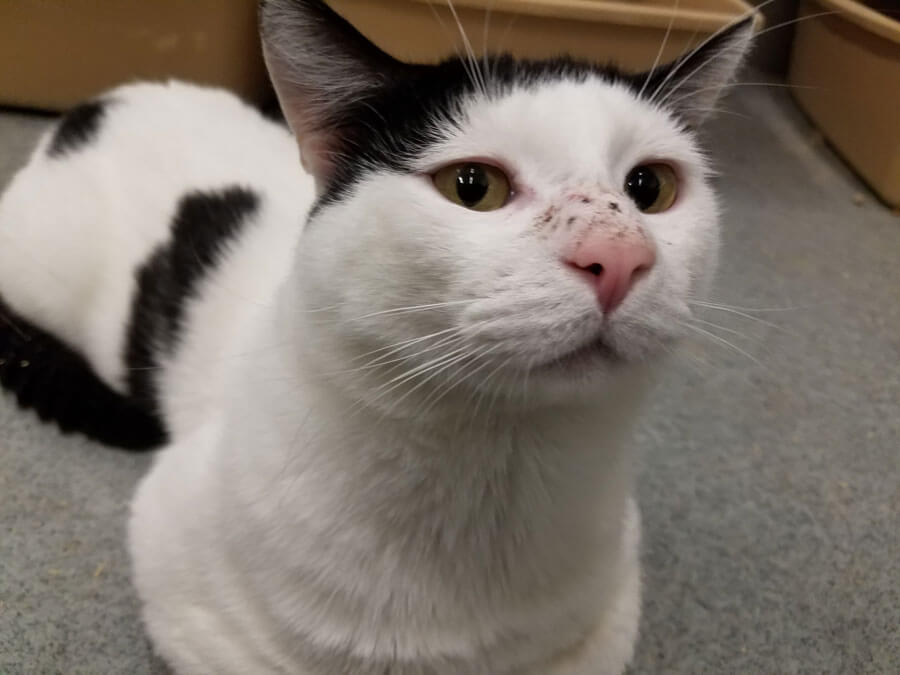

Another cat, Dak, had a painful, ulcerated right cornea after another cat, in the words of a technician, “poked a freaking claw right through” it. The eyewitness saw no records of pain relief being given to Dak for her injured eye.
Sloppy Practices
A worker admitted that Liberty has shipped animals to the wrong customers because the tattoos used to identify the animals can eventually become unreadable. When the worker was asked, “Do they notice?” she replied, “Sometimes. Sometimes not.”
The company could eliminate this problem by using microchips. But Liberty opted to tattoo cats and dogs since this painful procedure is cheaper.

Liberty cut corners by tattooing animals rather than microchipping them—even though this undermined their welfare.
Liberty cut other corners. It used the same animals in test after test, apparently without understanding the long-term effects of the experimental compounds and possible interactions with other medications. Recycling animals in this way could introduce confounding factors, further calling into question the value of any experimental results.
Take Action for Dogs and Cats Now!
The animals imprisoned at Liberty are just like the cats and dogs in our homes. PETA’s eyewitness observed that dogs at Liberty jumped up and down at the sight of a human, desperate for attention. Cats circled around the legs of visitors who entered their enclosure and, after they left, climbed the fencing that held them in, longing to be petted.
But instead of receiving love and enjoying the comforts of a home, the animals bred and imprisoned at Liberty endure short, miserable, pain-filled lives.
PETA has written to companies that conduct business with Liberty, asking that they reconsider their relationship with the company. But we need your help.
Please take a moment to speak out for the dogs and cats at Liberty. Urge its customers—including Merck, Bayer, Merial, Zoetis, Novartis, Michigan State University and the universities of Pittsburgh, Florida, and Louisville—to reconsider their ties with Liberty.
